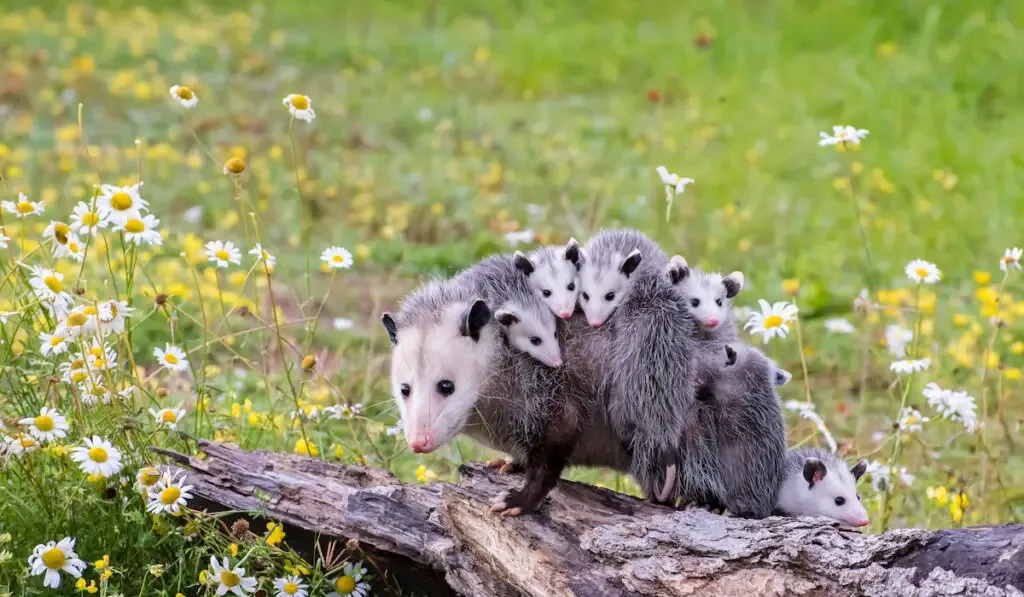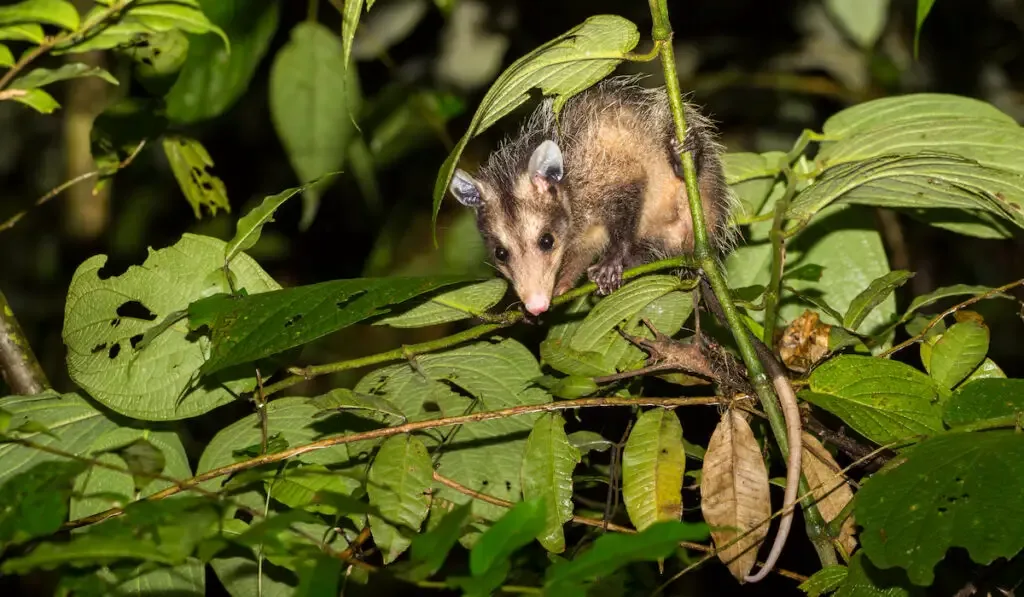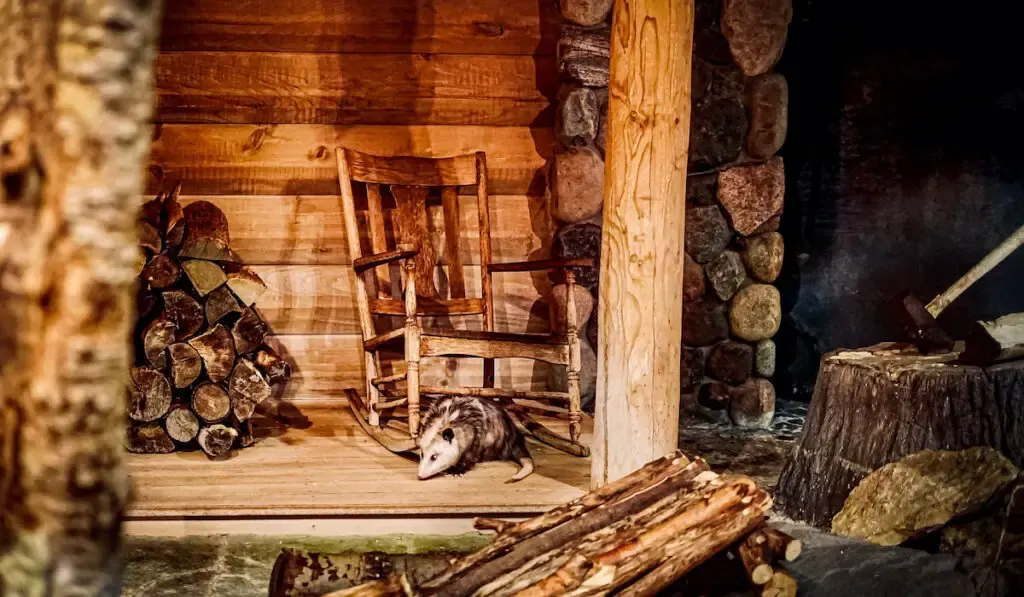Due to their omnivorous diet, opossums can live and survive in many human environments. But while their presence in human spaces can be beneficial as they provide natural pest control, opossums can also become a nuisance.
If you have opossums living around you, and they have become a disturbance, you will want to remove them for sure. But before you can get them out, you have to find their nesting spots.
Below, we mention various interesting spots where opossums nest. We also talk about finding an opossum nest while answering other questions.

Table of Contents
Where Do Opossums Nest?
Opossums generally nest in dry shelters. Having a dry den is essential for opossums since they do not get sufficient insulation from their fur.
Living in moist spaces leaves opossums prone to frostbite when the temperature drops. Their tails, toes, and ears, which are hairless, are more likely to feel the effects of cold temperatures.
Opossums do not build their own nests. Instead, they live in nests created by other animals or natural shelters. You may find opossums nests in the following interesting spots:
- Rock Crevices
- Wood Piles
- Hollow Logs
- Hollow Trees
- Burrows/Holes dug by other animals
- Basements
- Crawl Spaces
- Attics
- Chimneys
- Backyard Steps
- Decks
- Dark, Hidden Building Spaces
Do Opossums Nest in the Same Place?
Opossums typically avoid nesting in the same place every time. They move across multiple nests periodically to prevent encounters with predators.
Opossums do not really have effective defense mechanisms. Besides that, they are slow runners with poor vision, and all these qualities leave them prone to predation.
True, opossums show their teeth or play dead to keep predators at bay. But then, these are not always effective. So, to reduce the chances of a predator finding them, they do not stay in the same nest for long.
Individual opossums can have many dens. Every few days, they will move across each one of their dens.
So, even if a predator spots them in one nest, they may have moved to another when the predator attacks.
A study by the Washington Department of Fish and Wildlife revealed that a male opossum, which had a tracking device on it, moved across 19 different dens in 5 months.
Movement across nests is more flexible for single male opossums than females with young. Females with young ones typically spend more time in the same den before moving. Also, during a cold spell, opossums spend longer times in one nest.
How Do You Find a Opossum Nest?
If you intend to find an opossum nest on your own, you must go prepared. For one, you must wear protective clothing. Before you try to find an opossum nest, do the following:
- Wear a long-sleeved shirt.
- Wear a long pair of pants.
- Wear closed-toe shoes.
- Get a pair of gloves.
- Get a good, bright flashlight.
- Wear a face mask.
Once you have done the above, follow these steps to find an opossum nest:

Step 1: Look For Clues
Go around your property and look for signs of an opossum infestation. Examine your trash cans for signs of tampering. Check for scratches on the trash can. Also, check to see if some of its contents are missing. If any of these signs are present, possums most likely have been eating from the trash can.
After examining the trash can, look for scratches on your house. Opossums sometimes leave scratch marks while trying to enter people’s homes. While looking out for these scratches, watch closely for droppings as big as cat droppings.
Also, you may hear noises in your basement or attic if opossums nest in either of these places. So, listen out for that.
Step 2: Find the Nest
You most likely have opossums around once you find the clues above. The opossums’ nest may be around the places you found the clues. So, start your search around those places.
The best time to find opossums’ nests is during the day. Remember, they are nocturnal. So, at night, they leave their nests in search of food.
When searching for opossum nests, look into various covered spaces around the clues you found. Check holes and crevices near your house and look into hollow logs. If the places you are looking into are dark, use the flashlight during your search.
If you’ve been hearing noises in your attic or basement, check them carefully.
Once you find the nest, you may choose to remove the opossum yourself. Alternatively, you can get a professional animal removal service to help you with the process.
Do Opossums Dig Under Houses?
Opossums do not dig under houses. Opossums may dig into the ground searching for worms, slugs, and insects, but these types of holes are usually shallow. Opossums do not burrow large holes.
While it is true that opossums can get a lot of insulation in deep underground holes, they cannot create one themselves. They rely on existing burrows or wait for another animal to dig one.
The fact that opossums cannot dig their own burrows offers an opportunity to prevent them from staying in your yard. If you cover any existing holes in your compound, you will shut them out.
What Attracts Opossums to Your Yard?
The primary thing that attracts opossums to your yard is food. If you have a garden in your home, the fruits, flowers, and vegetables may attract opossums.
Besides attracting opossums directly, the garden will attract small animals like worms, snails, slugs, and insects. Since opossums feed on these animals, they will fancy dwelling in your compound.
Apart from a garden, if you leave food scraps lying in or around your trash can, they may attract opossums. Also, if your trash can is not well-covered or is too full, it may draw opossums to your yard.
The smell of food scraps in and around trash cans plays a crucial role in drawing opossums to your yard.
While opossums live in dry shelters, they fancy living in places close to water. So, if your yard is close to a pond, ditch, or sewer, you may get visits from opossums.
Possums like concealing themselves. So, if your yard provides many hiding spots, opossums may just find their way in.
If you have clumps of tall grasses or low-lying shrubs in your yard, opossums can move about with some stealth.
Apart from concealment, if you have trees or vines around your fence, they can serve as a means of entry for opossums. The opossums will climb the trees or vines and make their way into your yard via low-hanging branches.
Lastly, an extra dark yard may attract possums. Opossums are nocturnal animals, so obviously, they will thrive better in the darkness of your yard.

Final Thoughts
Opossums nest in dry spaces which provide insulation and safety from predators. Their nesting areas are typically close to food sources, but interestingly, they do not dig their own burrows.
Opossums live in existing holes or spots, and they usually have more than one den for safety reasons.
Resources
- https://www.paws.org/resources/opossums
- https://www.terminix.com/blog/education/where-opossums-live-in-winter/
- http://www.wildlifeanimalcontrol.com/opossumclimb.html
- https://www.pests.org/get-rid-of-opossums/
- https://worldclasswildliferemoval.com/wildlife-blog/opossums-in-my-backyard
- https://www.pests.org/get-rid-of-opossums/
- https://wildlifetroopers.com/do-opossums-burrow-under-houses/
- https://mybackyardlife.com/do-possums-dig-under-houses/
- http://www.aaanimalcontrol.com/professional-trapper/opossumdigholes.html
- https://www.westchesterwildlife.com/blog/what-attracts-opossums-to-your-yard/
- https://opossumsocietyus.org/how-to-attract-opossums-to-your-property/
- https://homeguides.sfgate.com/how-to-keep-opossums-out-of-the-yard-13407163.html
